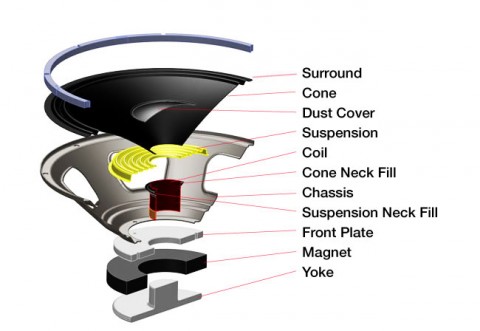|
| Components |
Magnets |
Sound Waves |
Hearing Sound |

Speaker Components
HH Electronics
The yoke is the back of the speaker provides stability to the magnet of the speaker. Magnets are specifically designed for each size of speaker and is part of the driving force behind creating sound. The front plate combines with the yoke and magnet to complete the magnetic circuit. The chassis holds the parts of the speaker together and provides an acoustic field to the created sound. The coil, or voice coil, acts as an electromagnet which either aligns or opposes with the stationary magnet thus causing the speaker to move. The suspension, also called a spider, allow for the speaker to return to a neutral position allowing for accurate sound creation. The cone is a type of diaphragm and is attached to the voice coil and moves at it moves. The dust cover, perhaps self-explanatory, cover the cone from collecting dust.
While many aspects of physics are at work within a speaker the major ones are Electromagnetism and Sound waves.